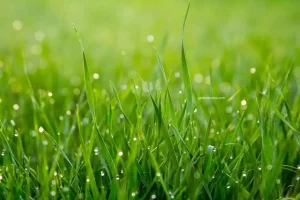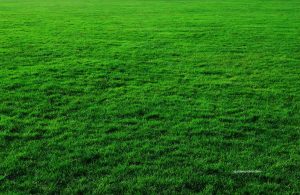As people think of grass is a common plant that is often found in gardens, parks, and meadows. While it is widely known as the primary food source for grazing animals, whether the grass is a plant or can be considered a vegetable is often debated. Moreover, this article’ll explore how grass is classified and its benefit for garden landscapes.

The common type of grass
The grass is a type of plant. It belongs to the grass family, scientifically known as Poaceae. This family encompasses various species of grass, each with unique characteristics and growth patterns. There are numerous grass species, and each adapted to different climates and environments. Some common species include Bermuda grass, Kentucky bluegrass, and ryegrass. These grasses vary in appearance, growth habits, and uses.
Plants like bamboo and wheatgrass show how grass can grow and develop into different forms. While they all originate from the grass family, specific genetic and environmental conditions determine how grasses evolve and adapt to their surroundings, resulting in the growth of unique plant forms.
While some grasses may produce flowers and consider grass is a flowering plant, they are not the primary characteristic that defines grass. Unlike vegetables, which often have showy flowers, grasses typically have inconspicuous or do not produce flowers. Some examples include corn (maize), and wheat are classified as grasses in nature, they are usually not referred to as grass when people think of vegetables.
Whether grass is a vegetable? Definition of vegetable
It is essential to differentiate between grass and traditional vegetables to ensure a balanced and nutritious diet. Vegetable plants are typically the edible parts of plants other than their roots, such as leaves, stems, or flowers. Vegetables are generally herbaceous plants that have a specific purpose in human nutrition.
There are different varieties of grass, but none of them are considered vegetables. Some examples, including bamboo, wheat and maize are grass in nature. These plants are often consumed in the form of their young shoots or juice for their potential health benefits or their use in certain dietary practices, but the grass is not considered vegetables in the traditional sense.
Following garden facts, grass is not typically considered a vegetable in botanical and nutritional sciences. While grass may have some characteristics with certain vegetables, such as barley, which can be consumed by humans in the form of sprouts or grass juice, grass isn’t fit the criteria of a vegetable as per the scientific classification.
The reason why grass is not a vegetable is because it lacks specific characteristics that define a vegetable. Grass does have its own role in the ecosystem and does not fit the criteria for being classified as a vegetable. It also belongs to the Poaceae family and is considered a type of plant. It is not a flowering plant like many vegetables.

Role of grass in the garden
The grass is primarily comprised of stems, leaves, and roots. The branch of the grass, also known as the culm, provides structure and support for the leaves and flowers. The leaves, along with the stem, are the most visible parts of the grass plant.
Grass plays an important role in garden landscapes. It helps create a lush, green appearance and provides a soft and safe surface for walking, playing, or any setting for various outdoor activities. Additionally, grass will be erosion control, filter rainwater, and contribute to the garden ecosystem’s overall health and biodiversity. Grass helps cool the surrounding environment through transpiration, reduces noise pollution, and acts as a natural filter by trapping dust and pollutants from the air.
Can we eat grass? Is it dangerous for humans?
Regarding human consumption, there are different schools of thought on the topic. Some people believe that grass is part of an edible plant and even consider it a type of vegetation. They may consume wheatgrass or barley grass as part of juicing or natural remedy regimens or grass can help reduce cholesterol, but this should be done in moderation and under proper supervision. However, for several reasons, most nutrition experts and botanists argue that grass is not classified as a vegetable.
The nutritional value of grass is also low for human consumption, so there will be differences between the grass consumption of humans and animals; animals typically consume it. It primarily consists of carbohydrates, fiber, and minimal protein. Grass lacks essential vitamins and minerals usually found in vegetables and is not a significant source of essential nutrients. Therefore, it is not considered a substantial source of nutrition for humans nor well-suited to digest it. Consuming large amounts of grass can pose health risks due to the indigestible fibers and potential contaminants in the grass-growing environment.
Is grass safe for human consumption?
While humans are not recommended to consume grass as a significant part of their diet, small amounts of certain grass can be safely consumed. However, ensuring the grass is clean and free from any pesticides, herbicides, or other contaminants that may harm human health is important.
Grasses are edible but in small amounts, generally not dangerous for humans, but it is not recommended as a regular food source. As mentioned earlier, grass lacks significant nutritional value for humans, and consuming large amounts may lead to digestive discomfort or other health issues.
As with any food, there are potential risks associated with eating grass. The main concerns are the presence of contaminants, such as pesticides or heavy metals, which may be present in grass grown in polluted environments. Additionally, some individuals may have allergies or sensitivities to certain grass species, which could cause adverse reactions when consumed.
FAQ
Can we consider grass as a vegetable?
Yes, the grass is considered a vegetable. It belongs to the Gramineae family, which includes various species of grass. Although not commonly consumed by humans, grass can be classified as a vegetable.
What type of plant is grass?
Grass is a flowering plant with a stem and is part of the Poaceae family. It is a typical vegetation found in grasslands and lawns.
Can humans eat grass?
Yes, grass can be consumed by humans. Certain grass varieties, such as barley and wheatgrass, are considered edible. They are often juiced or used in salads and other dishes.
How do we classify grass?
Grass is classified as a vegetable based on its characteristics and botanical classification. It is considered a flowering plant and belongs to the Gramineae family, which includes various grass species.
